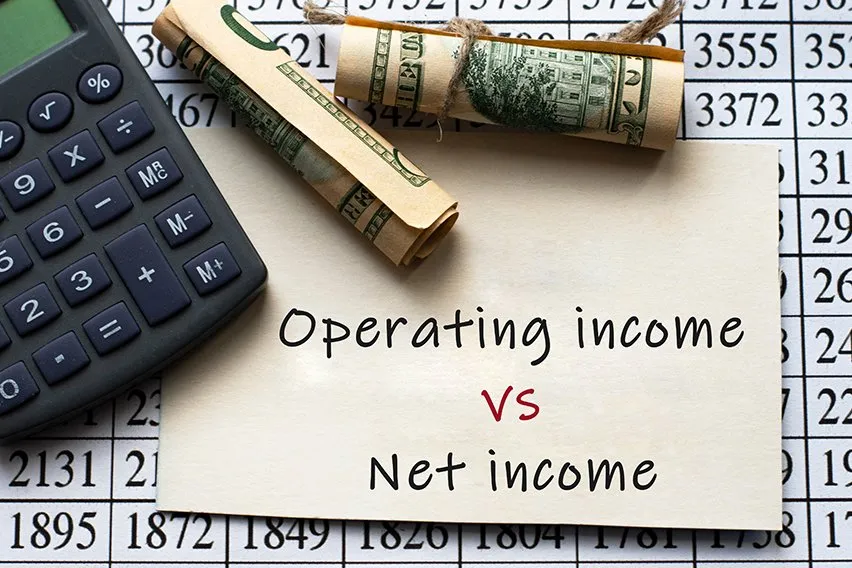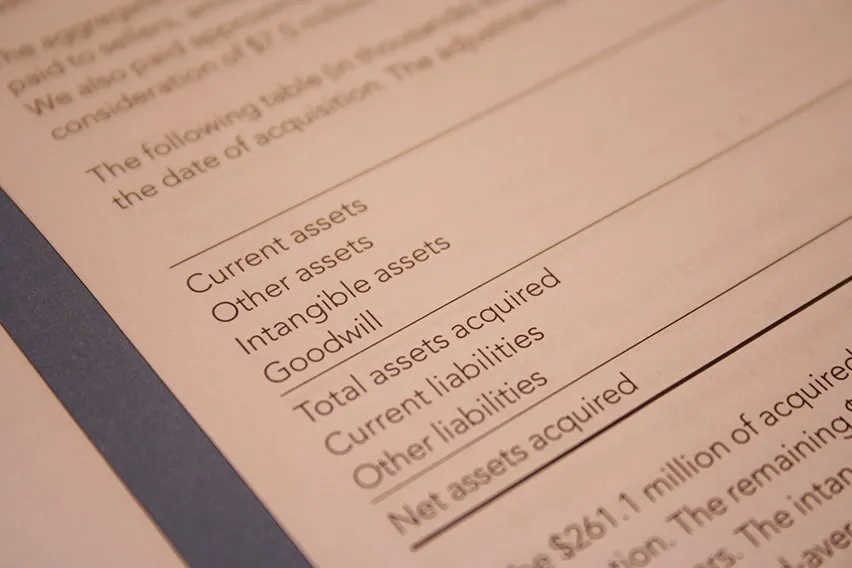Inventory Write-Off: How To Do It With Examples

If your company holds product inventory, you may sometimes have to perform an inventory write-off—an accounting process of reducing the value of inventory that has lost its value. You should write off inventory that has lost value due to damage, deterioration, loss from theft, damage in transit, changes in market demand, obsolescence, or misplacement. Inventory write-offs are different from write-downs, which record reductions in inventory value.
In this guide, we’ll break down everything you need to know about inventory write-offs, including what they are, when to do them, whether to use the direct write-off method or allowance method, the difference between write-offs and write-downs, and the impact that making write-offs will have on your income statement.
Key Takeaways
- An inventory write-off is a term for the accounting process of recording financial losses related to inventory that has lost the entirety of its value.
- Inventory can lose value due to damage, destruction, loss, theft, obsolescence, or major changes in market trends.
- There are 2 methods of writing off inventory: the direct write-off method and the allowance method.
- Write-offs are different from write-downs, which are used when the inventory’s value has been reduced, but can still be sold.
- Large dollar amounts of inventory write-offs must be reflected on the business’s income statement.
Table of Contents
- What Is an Inventory Write-Off?
- When Should Inventory Be Written Off?
- How to Write Off Inventory
- Inventory Write-Offs Vs. Inventory Write-Downs
- Direct Write-Off Method Vs. Allowance Method
- How to Write Off Damaged Inventory?
- How Does a Write-Off Affect the Income Statement?
- Simplify Inventory Management with FreshBooks
- Frequently Asked Questions
What Is an Inventory Write-Off?
An inventory write-off is an accounting term that means a company formally recognizes that some of its inventory has lost its value due to loss, damage, deterioration, or other factors, and is no longer considered a saleable asset.
‘Inventory’ refers to any asset that the company can either sell for revenue or convert into goods that can be sold for revenue. When these assets become obsolete, damaged, spoiled, lost, or stolen, the company must write them off.

When Should Inventory Be Written Off?
The accurate value of inventory is crucial in calculating gross profit or loss. This is why it’s important for businesses to account for inventory write-offs when the value of inventory changes significantly.
This could happen due to the following reasons:
- Inventory is stolen by shippers, shoplifters, or employees
- Inventory, such as fruits and flowers, may be spoiled due to their short shelf life
- Damage due to inadequate storage and handling
- Items such as technology products with high market value can become obsolete after a few months
While most businesses do an inventory write-off at the end of each year, if you have a large inventory, you should account for significant changes once every month.
How To Write Off Inventory
If your inventory has lost its value due to any of the above reasons, you’ll need to write it off in order to maintain transparent and reliable financial statements.
Properly writing off unsaleable inventory will ensure you’re accurately reporting your profits and following generally accepted accounting principles (GAAP).
Here are the steps to write off inventory:
- Identify the obsolete (or damaged, deteriorated, missing, etc.) inventory items in your stock that no longer have value—in other words, assess the damage.
- Once you know the number of inventory items that will be written off, calculate your losses by multiplying that number by the cost-per-unit of the relevant items.
- Account your written-off inventory as an expense—usually in an inventory write-off expense account.
- Reduce the amount of available inventory in your inventory system, removing the amount of unsaleable units from your available amount.
- On your balance sheet, debit your cost of goods sold (COGS) and credit your inventory write-off expense account. If the amount of loss is material, it should be identified separately in the income statement.
- Add comments justifying the write-off (e.g., explaining that the inventory was damaged, stolen, spoiled, etc.).
- Assess why the inventory had to be written off, and take steps to avoid it happening again in the future.
Inventory Write-Off Example
To better understand inventory write-offs, we’ll use a real-world example. Suppose your company sells scarves. Because of research on market trends, you have an inventory of red scarves worth $80,000 on hand. But suddenly, red scarves fall out of fashion completely, meaning the value of this inventory has been reduced to zero.
The journal entry for this inventory write-off would be a credit entry of $80,000 to your “Inventory” account and a debit of $80,000 to your “Loss on Inventory Write-Off” account. It would look like something like this:
| Account | Debit | Credit |
| Loss on Inventory Write-off | $80,000 | – |
| Inventory | – | $80,000 |
This loss will be included in the income statement as an operating expense.
The impact of this is:
- A reduction of the business’s net income and therefore, retained earnings.
- The reduction in retained earnings, in turn, decreases the shareholders’ equity in the balance sheet.
If the inventory write-off is inconsequential, the inventory write-off is charged to the cost of goods sold account. The problem with this is that it distorts the gross margin of the business, as there is no matching revenue entered for the sale of the product.
Inventory Write-Offs vs. Inventory Write-Downs
As you can see, inventory write-offs are reserved for inventory that has completely lost its value. But what about inventory that has only seen a reduction, but still retains some value? In this case, you’d instead use an inventory write-down.
If your company’s inventory’s value has been reduced below its cost on the books but still maintains some value, an inventory write-down to market or net realizable value is required, depending on the method of costing inventory. So, if we return to the example of the red scarves, you would write down their value if they become much less popular, but can still be sold. Please note that under U.S. GAAP, reversals of inventory write-downs are not allowed.
Direct Write-Off Method vs. Allowance Method
When making a write-off, you can use either the direct write-off method or the allowance method.
Direct Write-Off Method
In a direct write-off method, the business records a credit to its inventory asset account and a debit to its loss on the inventory write-off account. The loss is recognized in the period incurred.
The expense account is reflected in the business’s income statement. A direct write-off will reduce net income and retained earnings, also resulting in a decrease in shareholder’s equity.
Allowance Method
The allowance method is a better option when you’re able to reasonably estimate the loss incurred, but have yet to dispose of the unsaleable inventory. This method is useful for preserving the historical cost in the original inventory account.
In this method, you would record a journal entry with a credit to a contra-asset account, such as an allowance for obsolete inventory. The company would then make an offsetting debit to an inventory write-off expense account.
How To Write Off Damaged Inventory?
The process of writing off damaged inventory is a little different from writing off goods that have been stolen, completely destroyed, or have become obsolete. Here’s how to do it:
- When the stock arrives, separate damaged goods to be written off from saleable goods.
- Prepare a damage report detailing the amount and nature of each damaged item.
- Calculate the value of the damaged inventory (multiply the number of damaged units by cost-per-unit).
- Set up a loss on inventory write-off expense account to record the value of the damaged inventory.
- For every entry in the loss on inventory write-off expense account, reduce the amount of inventory carried on the books accordingly.
- If the amounts are immaterial, you can opt to debit your COGS account and simply credit your inventory account to write off the loss.
How Does a Write-Off Affect the Income Statement?
If you’re writing off small amounts of inventory, you don’t require separate disclosure on the income statement. Instead, the loss is included in the COGS amount.
However, if you’re writing off large dollar amounts of inventory, it has to be disclosed on your income statement. A separate expense such as loss on inventory write-off should appear on the income statement each time inventory is written off.
It’s vital to remember that the loss or reduction in the value of inventory cannot be spread and recognized over multiple periods, as this would imply that there is some future benefit associated with the inventory item. This is why inventory write-offs must be recognized when incurred.
Simplify Inventory Management with FreshBooks
Understanding inventory write-offs is essential when goods become lost, damaged, stolen, or otherwise devalued. With a solid understanding of the write-off process, you can note these losses and ensure your financial statements paint an accurate picture of your operations.
If you’re looking for an online tool to aid with key aspects of inventory management and financial recordkeeping, FreshBooks is here to help. Our expense tracking software is a simple, efficient way to note costs incurred by your business throughout the year, and it supports our automated financial reporting features for even greater functionality. Try FreshBooks for free today!

FAQs on How to Write Off Inventory
Are you still wondering how to write off unsaleable inventory? Here are a few frequently asked questions on the topic.
What is the formula for inventory loss?
The formula for inventory loss using the gross profit method is as follows: add current year purchases to the beginning inventory to calculate the cost of goods available for sale, then estimate the gross profit margin for the period, calculate COGS, and subtract it from goods available for sale to calculate the ending inventory. Finally, physically count the remaining inventory and subtract it from the calculated ending inventory. The difference is the lost inventory.
How is inventory treated for tax purposes?
For tax purposes, inventory can be valued using the cost, the lower of either cost or market, or using the retail method.
How to record inventory loss?
To record inventory loss, the business must credit its inventory account with the value of the written-off inventory to reduce the balance. Then, the loss on the inventory write-off expense account will be increased with a debit to balance.
What is an allowance for inventory loss?
This is a method of inventory write-off for businesses that expect to incur ongoing inventory loss due to obsolescence or damage. The business would establish an allowance account that is credited with an estimated amount of expected losses.
Can you write down inventory in GAAP?
Yes, you can write down inventory in GAAP, and in fact, it’s required. In order to comply with generally accepted accounting principles (GAAP), businesses must follow the inventory write-down process in their bookkeeping when their inventory’s value is reduced. No write-down reversals are permitted.
Reviewed by
Sandra Habiger is a Chartered Professional Accountant with a Bachelor’s Degree in Business Administration from the University of Washington. Sandra’s areas of focus include advising real estate agents, brokers, and investors. She supports small businesses in growing to their first six figures and beyond. Alongside her accounting practice, Sandra is a Money and Life Coach for women in business.
RELATED ARTICLES



 Accounting For Startups: Everything You Need To Know In 2025
Accounting For Startups: Everything You Need To Know In 2025 How do you use the Shareholders Equity Formula to Calculate Shareholders’ Equity for a Balance Sheet?
How do you use the Shareholders Equity Formula to Calculate Shareholders’ Equity for a Balance Sheet? How Do You Calculate Operating Income?
How Do You Calculate Operating Income? Operating Income vs. Net Income: Which Should You Pay Attention To?
Operating Income vs. Net Income: Which Should You Pay Attention To? How to Calculate Goodwill of a Business: Step-By-Step
How to Calculate Goodwill of a Business: Step-By-Step Foreign Currency Translation: International Accounting Basics
Foreign Currency Translation: International Accounting Basics